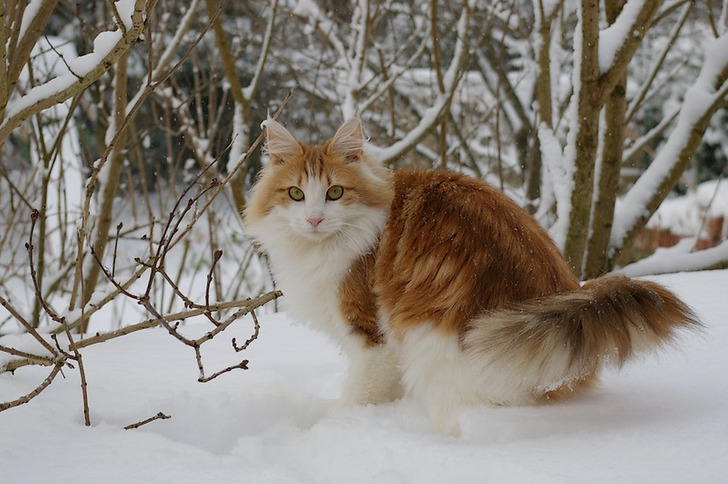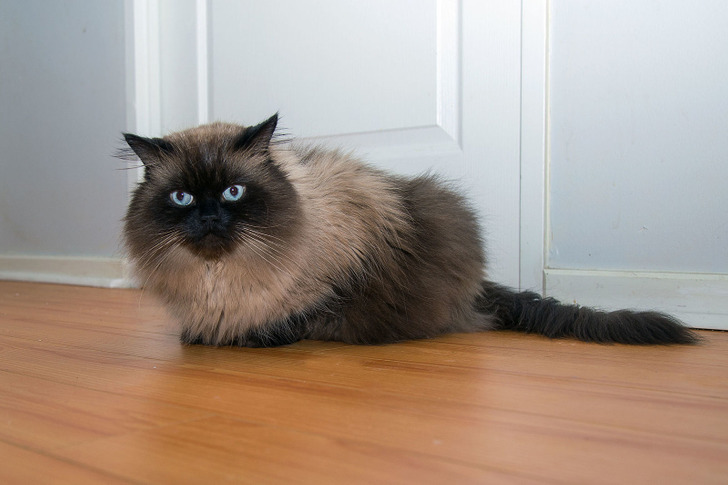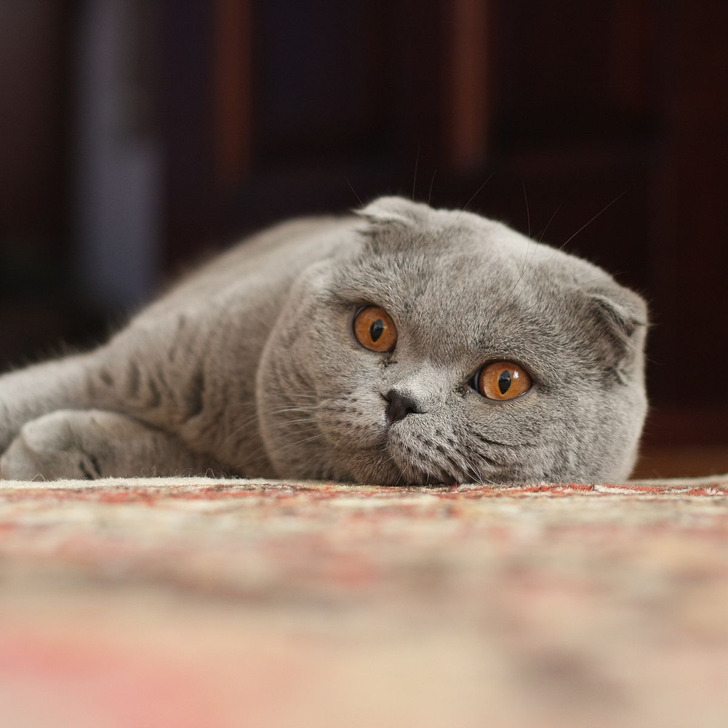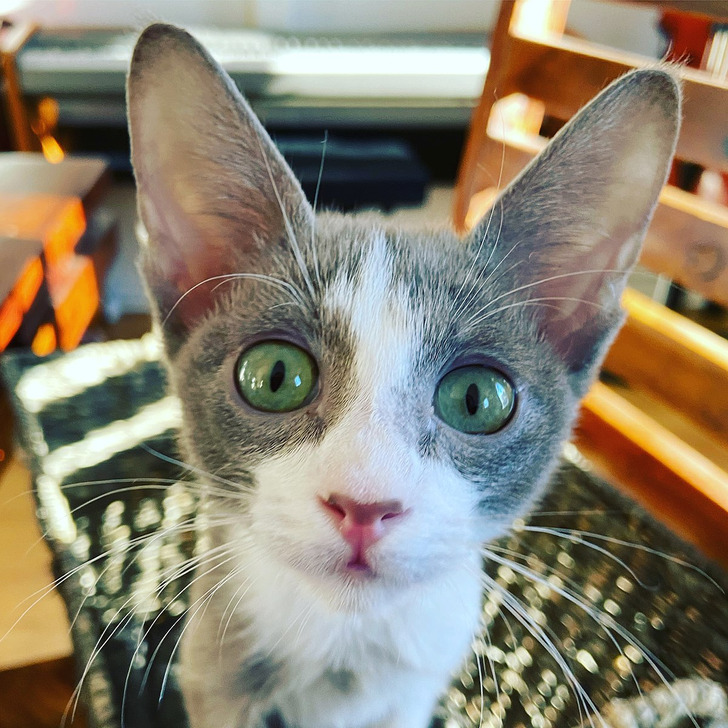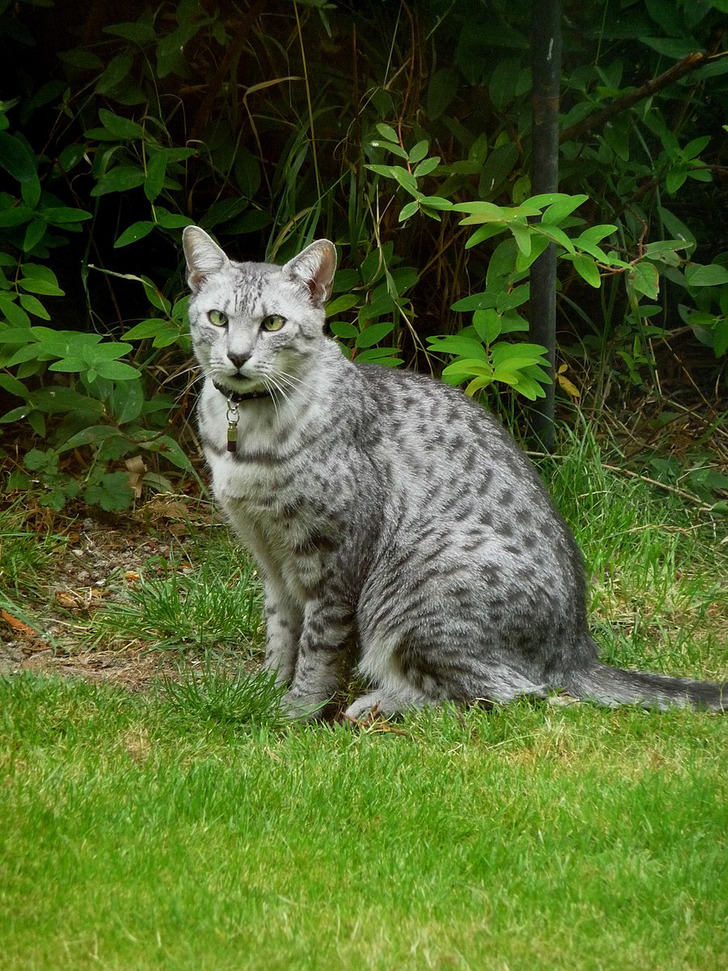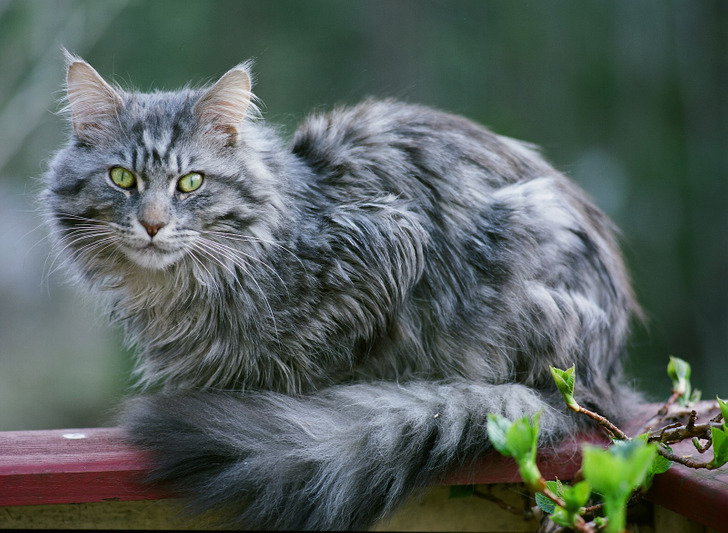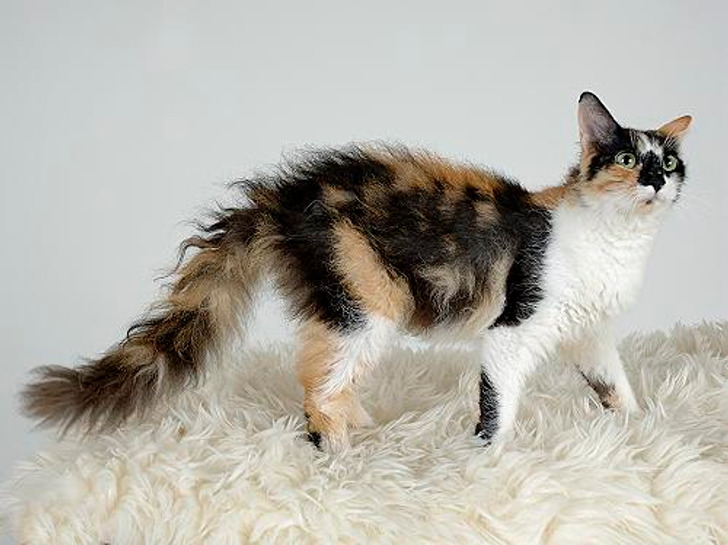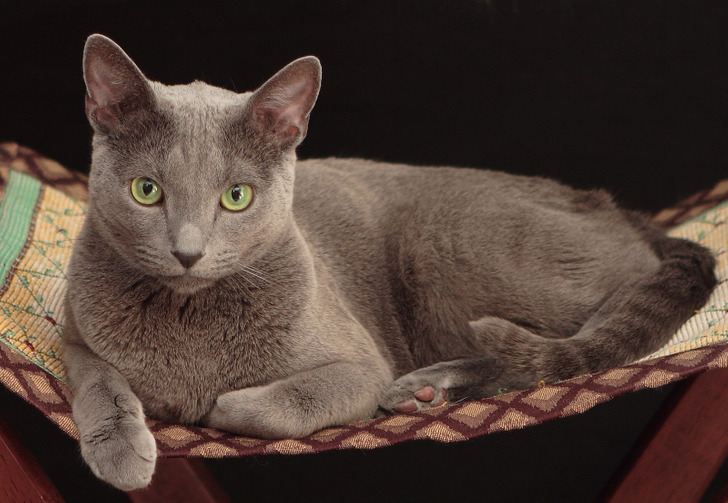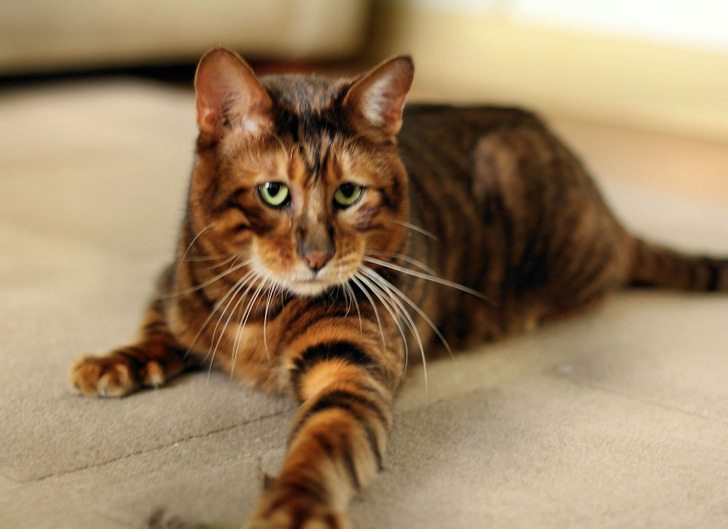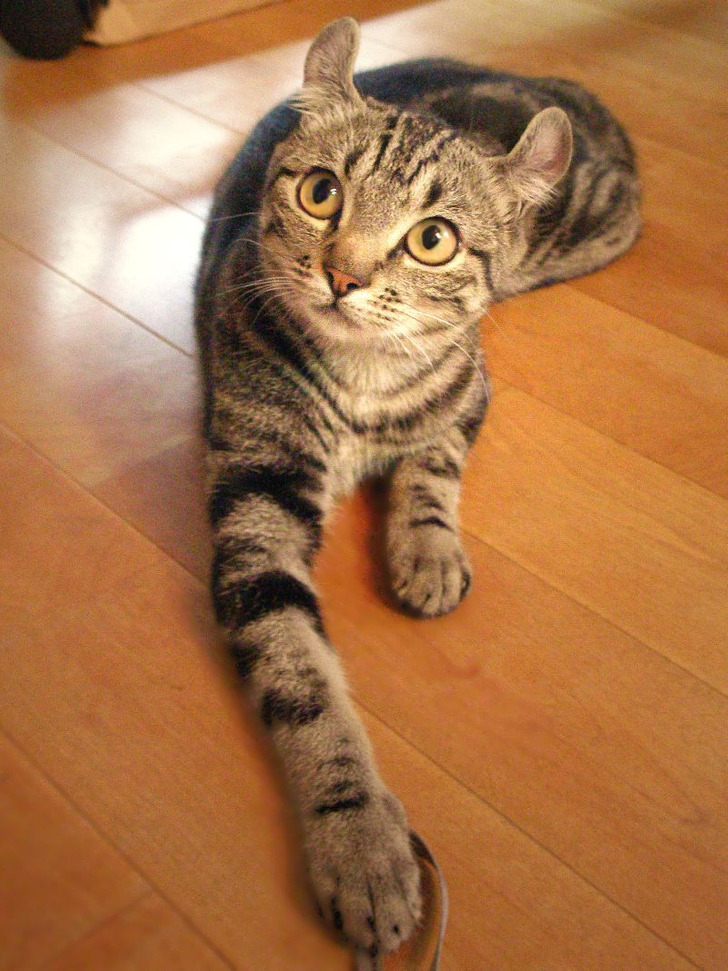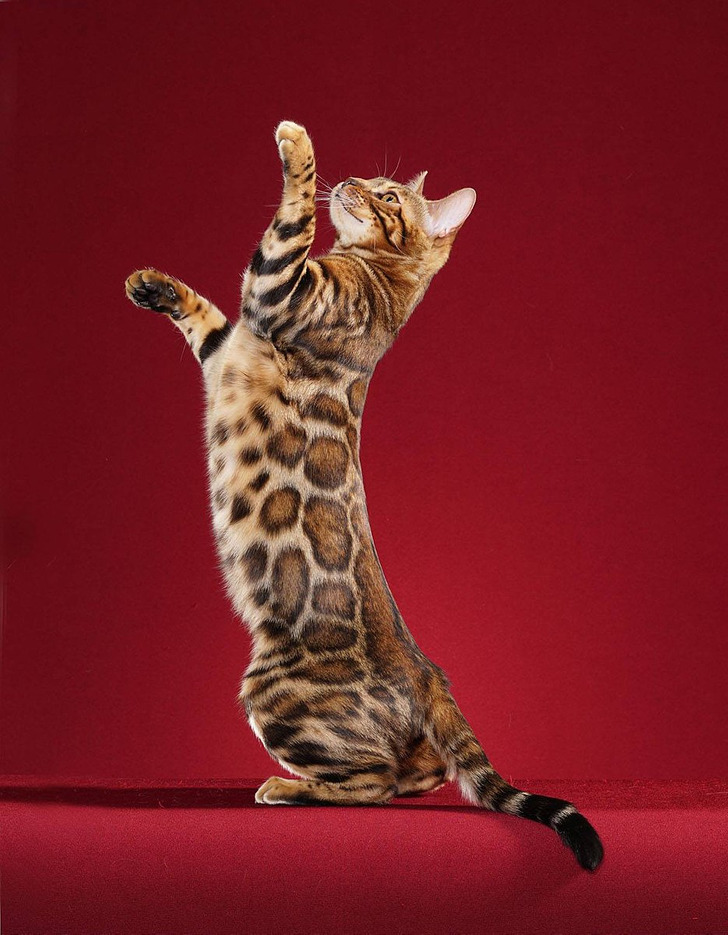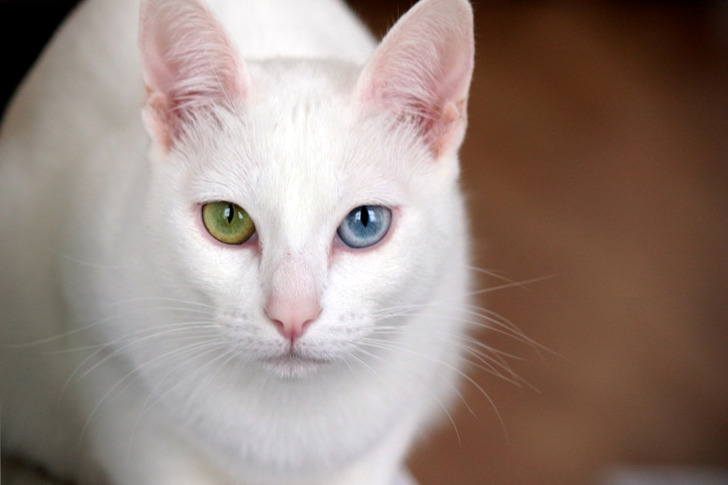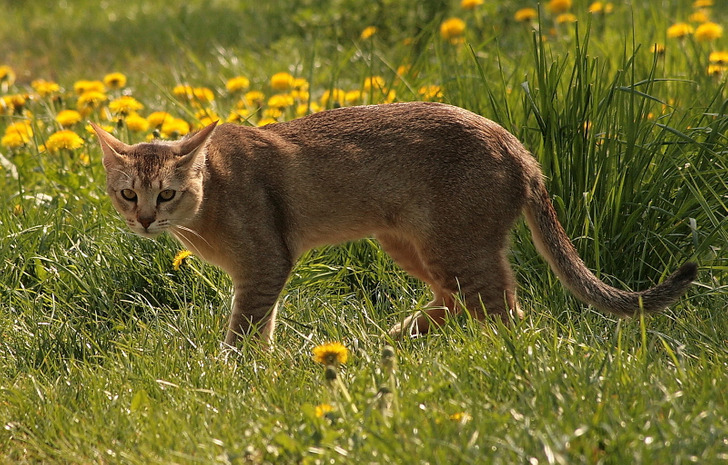Heyy, my name
14 Unique Cat Breeds That You Don’t See Every Day
Cats come in all shapes and sizes. They can be hairless and furry, wayward and friendly, or tender and freedom-loving. They’re stunning and are a never-ending source of fascination and curiosity to those who cherish their companionship.
According to the International Cat Association (TICA), there are 73 cat breeds officially recognized, and we at Bright Side picked some examples of the most exciting ones to tell our readers about. So follow us on this gentle journey to cherish cats’ unique and special qualities.
Norwegian Forest cat
The Norwegian Forest cat can stand to be in icy areas because it has a beautiful, long furry coat. This breed almost went extinct during the mid-twentieth century, but a breeding program decided to make more of them, increasing their numbers. As a result, this big and strong cat is trendy in Norway, Sweden, and France. It has long legs and can live up to 16 years.
However, if you decide to get this breed, try to watch out for kidney and heart problems they may have, as these issues have become common in this type of breed.
Himalayan cat
This breed is named the Colorpoint Persian as well and looks much like a Persian cat, but it’s characterized by blue eyes and colorpoint coloring (a light body and a dark face, feet, ears, and tail). Its body is a bit round with short legs, making it more difficult for them to jump as high as other cats can. There are 2 types of this cat — the doll-face and peke-faced (these tend to have more squished-looking faces). Himalayan cats appeared in 1950 in the US.
Himalayans are tender, obedient, and friendly cats with a calm temperament. Their fur is usually white, but they can come in many colors, such as black, blue, lilac, chocolate, and red. The hardest ones to produce are the chocolate and lilac ones because the parents must carry this color gene, and since it’s a recessive trait, it’s more difficult.
Scottish Fold
The most recognizable detail found on Scottish Folds is cute ears that, unlike other cats, don’t stick up — they hang. This unusual feature is a result of genetic mutation. These cats are extremely clever. They get along easily with other family members and are always ready to play. One more distinctive feature of Scottish Folds is that they can stand on their hind legs and observe things they’re interested in.
Peterbald
Peterbalds, also known as the Petersburg Sphynx, are elegant cats — they have slim bodies, elongated heads, and large extended ears. The body can be bald or fuzzy. Peterbalds are sociable, tender-tempered, and easy to train. These cats can be born bald, brushed, or with a straight coat. But those born with fur can lose it after some time, and they can come in all sorts of colors.
Their personality varies — it is sweet-tempered, affectionate, peaceful, curious, smart, and energetic. They like being around their owners and spend a lot of time with them. They generally don’t have problems living with other pets and tend to get along with children quite nicely.
Egyptian Mau
The appearance of these cats has changed very little over the last 3,000 years — since their emergence in Ancient Egypt. These cats have not only a spotted coat but also spotted skin. The cat is somewhat muscular, and its back legs are longer than the front, making it look tip-toed when standing upright. It is the fastest breed compared to other domestic cats and has a long and dark stripe that goes from the head to its tail.
Egyptian Mau cats appear in 4 colors — silver, bronze, black, and blue. When it comes to personality, they are very loyal, playful, and friendly — and they love warm temperatures. They wiggle their tails to mark their territory and also love to sing — their odd voices sound like bird chirps. The breed’s eye color can even change depending on how they feel (between green and bluish).
Maine Coon
The Maine Coon is one of the largest cat breeds. Its can weigh anywhere from 11 lb to 33 lb (5 kg to 15 kg), and a mature cat’s body can reach 4 ft (1.23 m) in length. However, despite their fearsome appearance, these are affectionate, gentle, and playful animals.
LaPerm
This is one of the most unusual breeds, and it appeared in the 1980s in the US. Thanks to their curly hair, LaPerm cats don’t shed very much, so they can be a good breed for cat parents with respiratory allergies.
Archangel Blue
This is one of the most popular shorthair cat breeds. It became known worldwide in the late nineteenth century. This cat has green eyes and is only one color, which is blue. It has a double coat — very thick and soft to the touch — and its tail has stripes, but they often aren’t seen well because they’re dull-colored. They are quite a curious, friendly, smart, and reserved breed.
They are known for playing fetch and opening doors and are very sensitive to people’s emotions. These cats are super loyal to their owners and other household pets. Although they can shy away from strangers and be seen as reserved, they’re quite the hunters. They can get bored easily, so they need toys and playmates.
Archangel Blues have a great memory, and they may even hide their toys somewhere in the house and then lead their owners to that hiding place if they want to play. They remember faces and can even greet familiar ones after a long time of not seeing them.
Toyger
This large cat breed resembles a tiger with its coat pattern, and it explains the name’s origin. The breed’s founder states that the Toyger was developed to inspire people to think about tiger preservation in the wild.
American Curl
This breed was developed in the US in the 1980s. The newborn kittens can hardly be distinguished from full-grown cats, but as early as their tenth day of life, their ears start turning back, like little horns. This specific feature from the American Curl touches the hearts of many people around the world.
Bengal cat
Bengals are a result of a cross between an Asian leopard сat and a domestic cat. These cats love to swim and, despite their impressive size (8.8 lb to 17.6 lb), they often climb their owners’ shoulders.
Khaomanee
We can find the earliest references to this breed in Tamra Maew, or Cat Book Poems (1350-1767). In ancient Siam, Khaomanees lived only with the royal families and were considered a symbol of luck, longevity, and wealth. They are a curious breed, loyal, and smart. They love to play fetch just before napping with you in a warm bed.
Chausie
This is one of the rarest cat breeds. It was developed by crossing a domestic cat with a jungle cat. These are very sociable animals, and it’s hard for them to bear loneliness. But, on the other hand, Chausies will be happy with any company, whether it be human, feline, or even canine.
Savannah cat
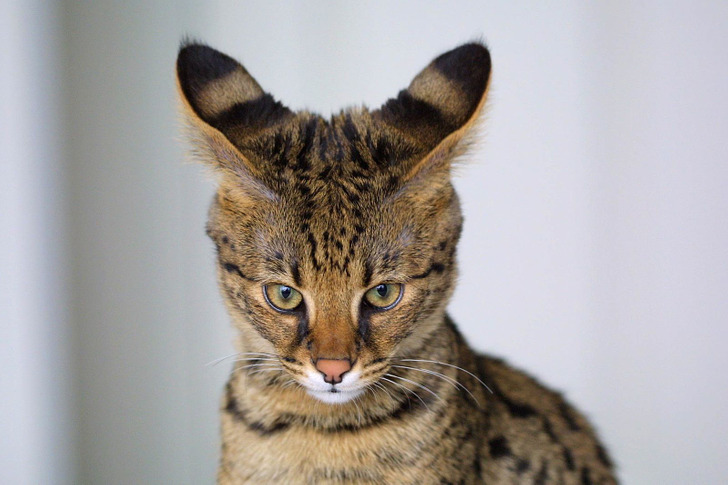
This breed was developed by crossing an African Serval with a domestic cat. They’re the largest cats: a mature cat weighs an average of 33 lb and reaches 1.9 feet in height. Savannah cats are known for their high level of intelligence, calm temperament, curiosity, and playful nature. They love taking baths, walking outdoors, and playing games. But to own such a wonderful cat, you need to have lots of space for it to play.
Do you happen to have a rare cat as a pet? If so, how is life with them at home?
Comments
I am from West Bengal, the Bengal cats are of different colours like golden, white and even brown sometimes blue, they are adorable, since they are very common here, never knew they were this special 😳
What is the hairless breed?
The information about the spots on the Egyptian mau is wrong. Their spots are only on the tops of their fur, not on the skin also
https://www.youtube.com/watch?v=5DZhv3yqgPA
Related Reads
15 Times Reality Beat All Expectations

15 Terrifying Illustrations That Show Something’s Wrong With This World
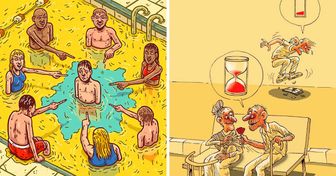
15 People Who Found Mysterious Objects That Turned Out to Have Easy Answers
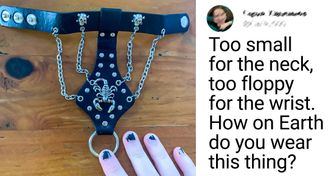
15 People Who Proved That Deception Is Waiting for Us Around Every Corner

23 Times There Was a Glitch in the Matrix

We Compared How Clothing on the Runway Looks on Models and Celebrities, and We Can’t Decide Who Impressed Us More

15 Family Secrets That Could Top Google Searches

12 People Whose Christmas Was Full of Twists and Turns

10 Romantic Encounters That Started Like a Dream but Ended Like a Nightmare

12 Stories That Show Peace Is a Myth When Family Is Involved

10 Real Stories With Twists So Intense They Can Make Your Heart Rate Spike

17 Stories About Exes That Are Like Episodes of a Soap Opera

